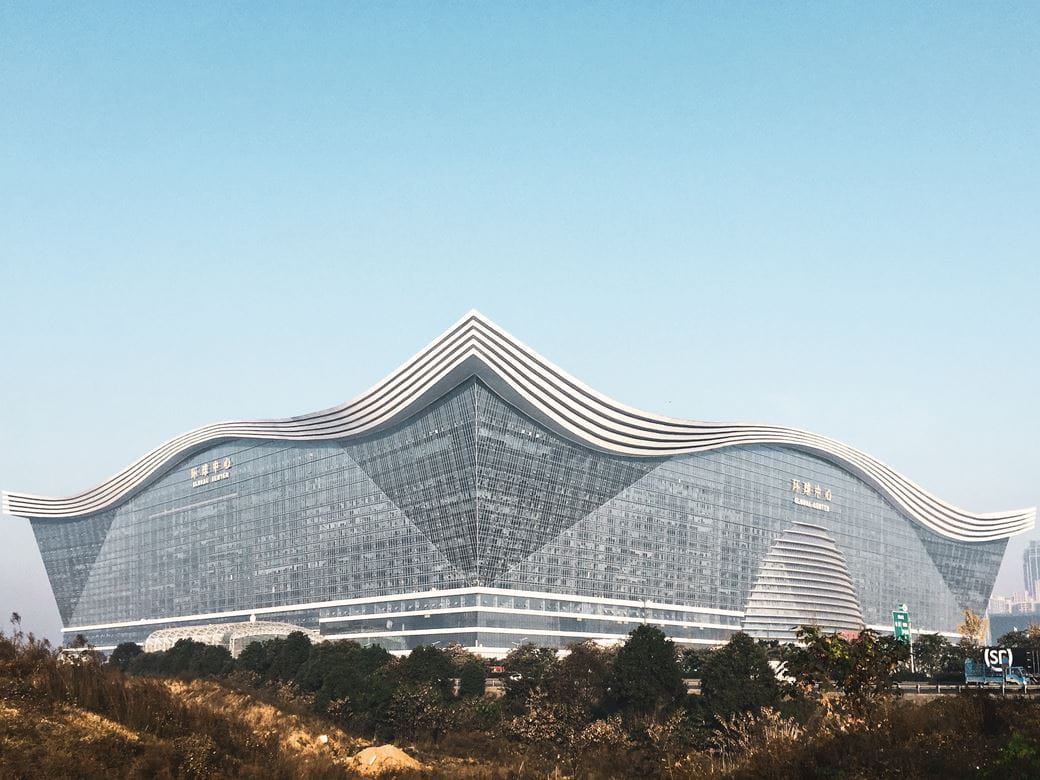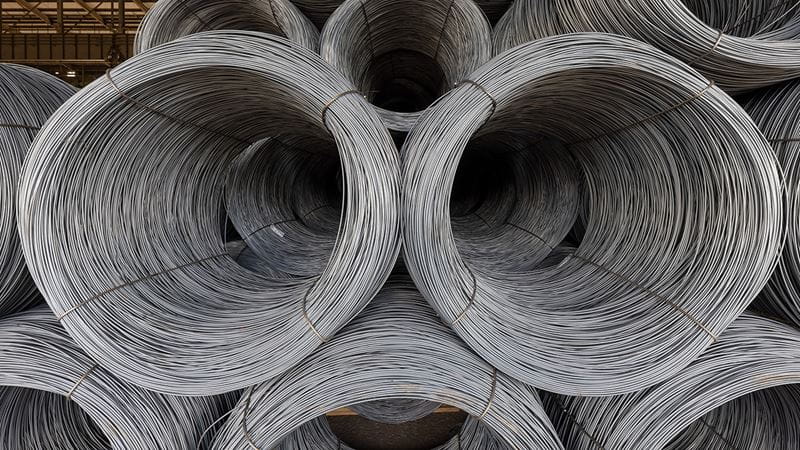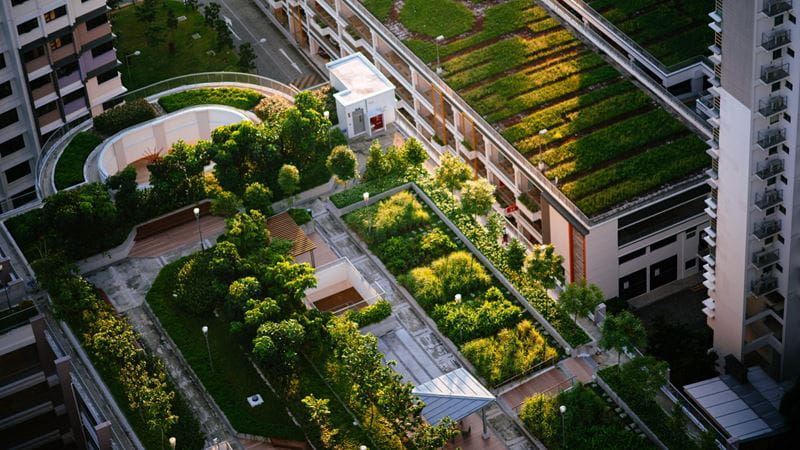
One hundred metres tall with 1.7 km2 of floor space, New Century Global Center in the Chinese city of Chengdu is the largest building on the planet.
The mammoth structure is home to shops, houses, offices, cinemas and restaurants – a towering testament to a Chinese construction boom that has accounted for half the world’s use of cement, steel and concrete.1
But China is not alone.
Across the globe, the consumption of construction materials has tripled to 17.5 billion tons from 6.7 billion tons in 2000, generating carbon and waste emissions during a lifecycle of buildings.
“With construction responsible for 40 per cent of global carbon emissions, dematerialising and greening the industry has become a priority,” says Carlo Ratti, founding partner of CRA-Carlo Ratti Associati and director of the MIT Senseable City Lab.
“But to achieve this, we have to adapt to new ways of building and employ innovative technologies.”
Globally, productivity growth in the construction industry has flatlined in the past two decades, in stark contrast to manufacturing whose efficiency has expanded by 3.6 per cent in the same period.2
In the EU, the industry accounts for 8 per cent of GDP – yet only 0.8 per cent of spending in research and development, a major driver of productivity growth.
Construction practices have not had a major makeover for decades. They have traditionally involved simple components and a complex assembly process on the construction site.
An average building, for example, is constructed using over 7,000 different parts which need to be assembled into a functional whole.
In order to improve efficiency and reduce the environmental impact, the industry needs to find ways to simplify construction processes.
Encouragingly, technological solutions are beginning to emerge.
Emerging technologies
Take design.
Here, new building information modelling (BIM) software promises to transform planning, designing and construction.
BIM uses data to make a virtual representation of a physical infrastructure that can be modelled and worked on in an open cloud platform. BIM applications make it easier for builders to evaluate complex considerations such as how much cement, steel and wood to use as well as carbon and waste emissions.
Computer numeric control (CNC) is another useful technology that automates certain construction processes. Taking inputs from a digital twin – or a digital replica of physical assets – CNC pre-programmes machines to mass-produce components using tools such as mills, lathes, drills, grinders, water jets and lasers.
Supply chain management (SCM) tools, meanwhile, can partner with digital twins to automate component production, delivery and installation. SCM can also minimise onsite storage and assembly by delivering materials in optimised flatpacks on a just-in-time basis.
Augmented reality (AR) can also be used to optimise onsite assembly. It can provide on-site construction workers crucial real-time guidance and remote technical assistance for installation.
AR can reduce the time for workers with low experience to understand design information. A study has shown the AR application halved the time required to absorb design information; a separate research showed AR-based approach can reduce the decision-making process by 77 per cent and improved efficiency when deciding the panel material.3
Materials 2.0
Yet even if new construction methods were adopted, such efforts will count for little if the industry continues to use vast quantities of environmentally damaging cement and steel.
Such materials account for around 85 per cent of total embodied carbon of a typical building – emissions that occur during the construction phase and include the extraction of raw materials, manufacturing, transportation, installation, and disposal of waste.4
Concrete exacts a particularly heavy toll on the environment. It is the most used man-made material on the planet, and perhaps most damaging given its carbon footprint – the cement industry accounts for 8 per cent of global CO2 emissions. What is more, concrete is hard to manufacture on a large scale in a factory – traditionally, it is cast on moulds onsite and requires time to set.
But in recent years, companies have been experimenting with new ways to make concrete more efficient and greener.
Singapore-based Precast Concrete, for example, is producing prefabricated and precast concrete that will speed up the building process.
Other firms have been using chemical additives to both make the manufacturing process more energy efficient and produce concrete that’s longer-lasting. Swiss chemical firm Sika has developed a technology to recycle concrete demolition waste in an innovative process which sequesters a significant amount of CO2.

Work is also under way to decarbonise steel.
Steel is compatible with CNC fabrication systems as it lends itself easily to creating highly customized parts, but it is a highly energy intensive material that often relies on pollution-releasing blast furnaces. Today, a few start-ups are producing carbon neutral steel which relies on green alternatives to coking coal, renewable energy and carbon capture and storage systems.
Modern and greener furnace technologies, especially those using hydrogen, reduce carbon intensity of steel production to less than 0.2tCO2 per metric ton of steel, compared with a global average of 1.8tCO2 with today’s cleanest counterparts.
That said, this won’t come cheap – it will be 20-25 per cent more expensive than the conventional steel on a 20-year period.5
Another green alternative to steel is wood.
Timber has strong credentials as a sustainable building material. Historically, timber has been used in building construction for centuries across the world thanks to its durability. In recent decades however, the material’s share in building has shrunk as concrete and steel, which are considered more durable, rot resistant and easy to mass produce, became more popular.
But today, timber is experiencing a revival thanks to a next-generation engineering technology. One of the most promising products is cross-laminated timber (CLT), a building panel made of sawn, glued and layered wood. CLT is a low-carbon material that is as strong as concrete but five times lighter.6
“It is ideally suited for complex factoring production and simple onsite assembly,” Ratti says. “Today, advances in technology and changes in regulation mean CLT will increasingly feature in all types of construction, from sprawling office complexes to high-rise buildings.”
Using CLT and glued laminated timber – another type of structural engineered wood product – as an alternative to structural steel and concrete slabs further reduce buildings’ embodied carbon. It is thanks to advances such as CLT that wood is growing in popularity as a building material. In the US, for example, the number of mass timber buildings is doubling every two years.
By the middle of the next decade, this number is on track to reach 24,000 – at which point the construction industry would be storing more carbon it emits.7
CLT will increasingly feature in all types of construction, from sprawling office complexes to high-rise buildings.
The future of construction
For the world to hit net zero, the world needs a leaner, more sustainable construction industry. New technologies such as BIM and CNC and a wealth of alternative building materials can help.
Investment insights
- by Ivo Weinöhrl, senior investment manager, thematic equities, Pictet Asset Management
- Urbanisation is one of the most powerful megatrends of the 21st century and will drive huge investments across all areas of urban development. At the same time, we expect the world will accelerate efforts to decarbonise, particularly in buildings which account as much as 40 per cent of global greenhouse gas emissions.
- As technology continues to advance, we believe innovative products and services that positively contribute to more sustainable and efficient building solutions will grow at a much faster pace. The IEA expects annual investment in energy efficiency in buildings is expected to grow to USD537 billion in the net zero scenario in 2026-2030 from USD244 billion in 2023.
- From construction/build design software to more energy-efficient solutions such as insulation, HVAC/heating and connected systems, we aim to capture attractive investments and deliver sustainable long term growth underpinned by megatrends of urbanisation, decarbonisation and digitalisation.

.jpg?w=800&hash=A762E63537733F0C4550DF27D87EBB16)



